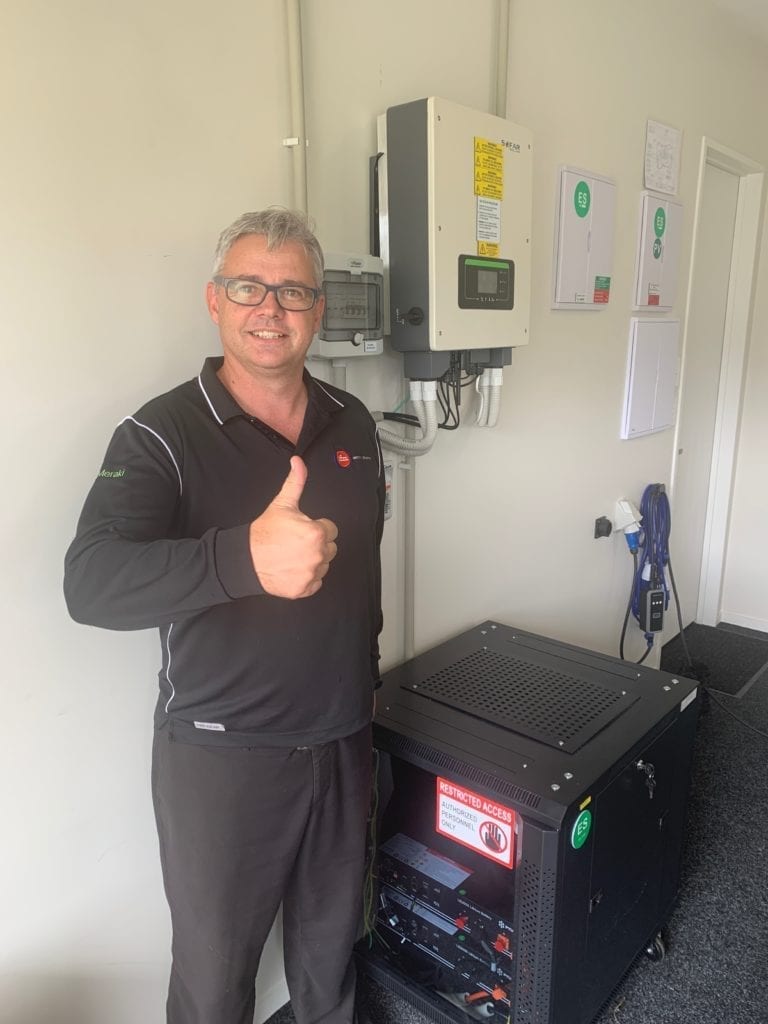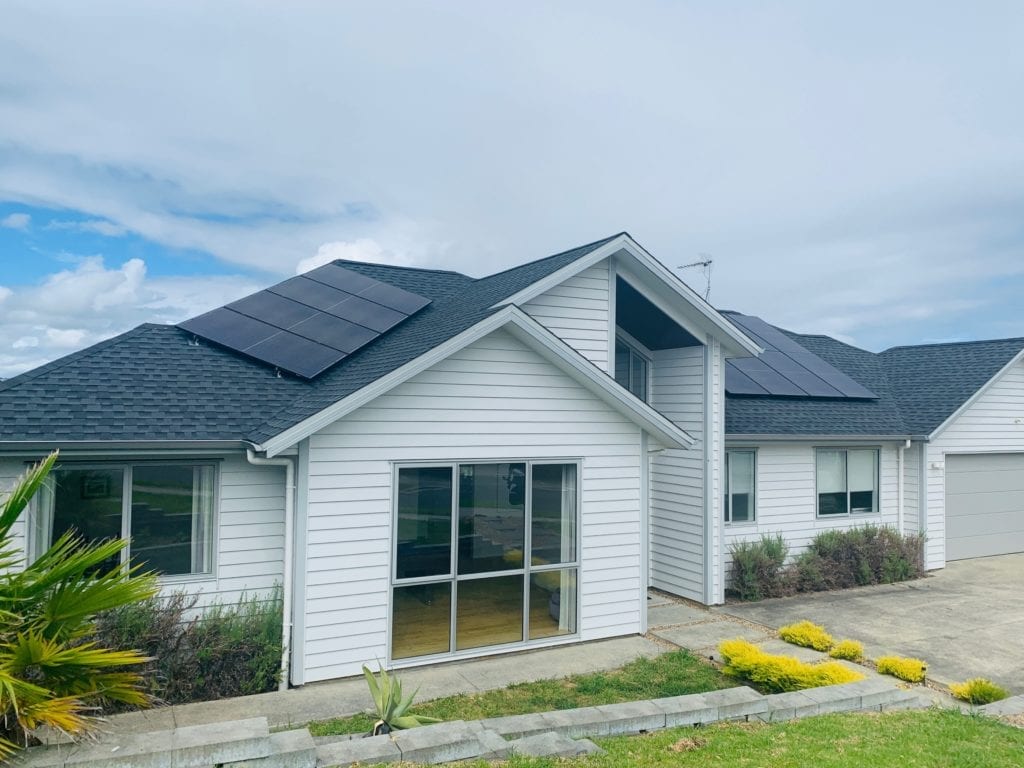Our Client Philip D’Ath is as passionate about solar energy as we are. And during his recent Solar Hybrid Installation, he made this YouTube Video with the accompanying post copied in full below. Philip provides valuable insight into his product choices and advice for others considering solar energy for their home.
“I wanted a solar power system that I could use for charging my electric car (Nissan Leaf) during the day, power the house, and would also work during a power cut.
I started by buying and installing the Open Energy Monitor solution. https://openenergymonitor.org/ After about six months I had an excellent profile on my power consumption and everything that used power in the house. I knew how much power I used, when and by what.
This video, a time-lapse video taken over a day of AA Solar (located in Silverdale, Auckland, New Zealand) installing one of the roof sections of solar panels, is the result of what I chose to achieve what I wanted. https://aasolar.co.nz/ As you can see, most of the time is spent on the preparation for the mounting of the solar panels.
These are 410W monocrystalline (called mono for short) PERC (passivated emitter and rear cell) half cell (basically a big solar panel that is actually two solar panels in one with a diode making them more shade-tolerant) solar panels. https://aasolar.co.nz/product/410w-mo…
I chose the 410W panels for a couple of reasons. To get enough power to charge my Nissan Leaf I needed to hit a certain power generation target over a 6 hour period. I have a limited amount of North facing roof space. So I needed to get the most amount of “juice” that I could out of that space. Secondly, I believe if you have a selection of options that can achieve what you want, choose the option with the least number of components. The fewer components the simpler the system, and the less that can go wrong.
Many people don’t realise that standard grid-tied inverters and micro-inverters are required to shut down during a power cut (known as anti-islanding). It’s not a feature limitation. It’s an electrical regulation that they must do this. So I paired the panels up with a Sofar Solar grid-tied hybrid inverter (hybrid inverters can supply power during a power cut through an emergency power output). The Sofar Solar was a “single box” solution that did this (remember I prefer solutions with the least number of parts for simplicity and reliability). https://aasolar.co.nz/product/sofarso…
You don’t get a lot of money selling power back to the grid in New Zealand so to reduce the wastage I used a couple of 2.4kWh Pylontech batteries. I really like the Pylontech batteries because they are modular, kinda like giant truck batteries. If you want more capacity you can just keep buying more modules. If you want more capacity, later on, you can just buy more batteries. If something goes wrong with one battery you can replace just the one. If in 5 years battery tech has advanced a lot you can just replace them. https://aasolar.co.nz/product-categor…
The other advantage of a grid-tied hybrid inverter is that when there is not sufficient sun to power the load in your house (or its is night time) the charge that was stored in the batteries can be used to make up the difference between what solar can supply and what you need, and then if it is still short, the rest can come from the grid. If the batteries go flat your house can still be powered from the grid.
Note I have no association with AA Solar and this is not a paid promotion.”

